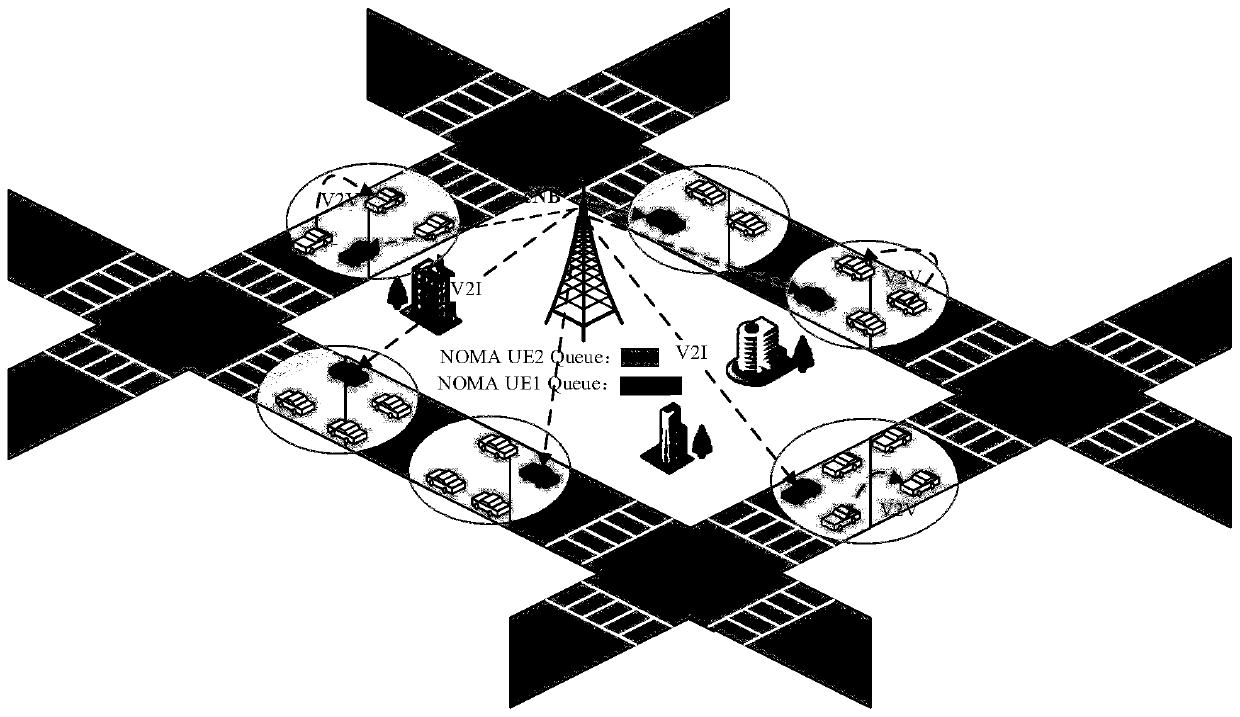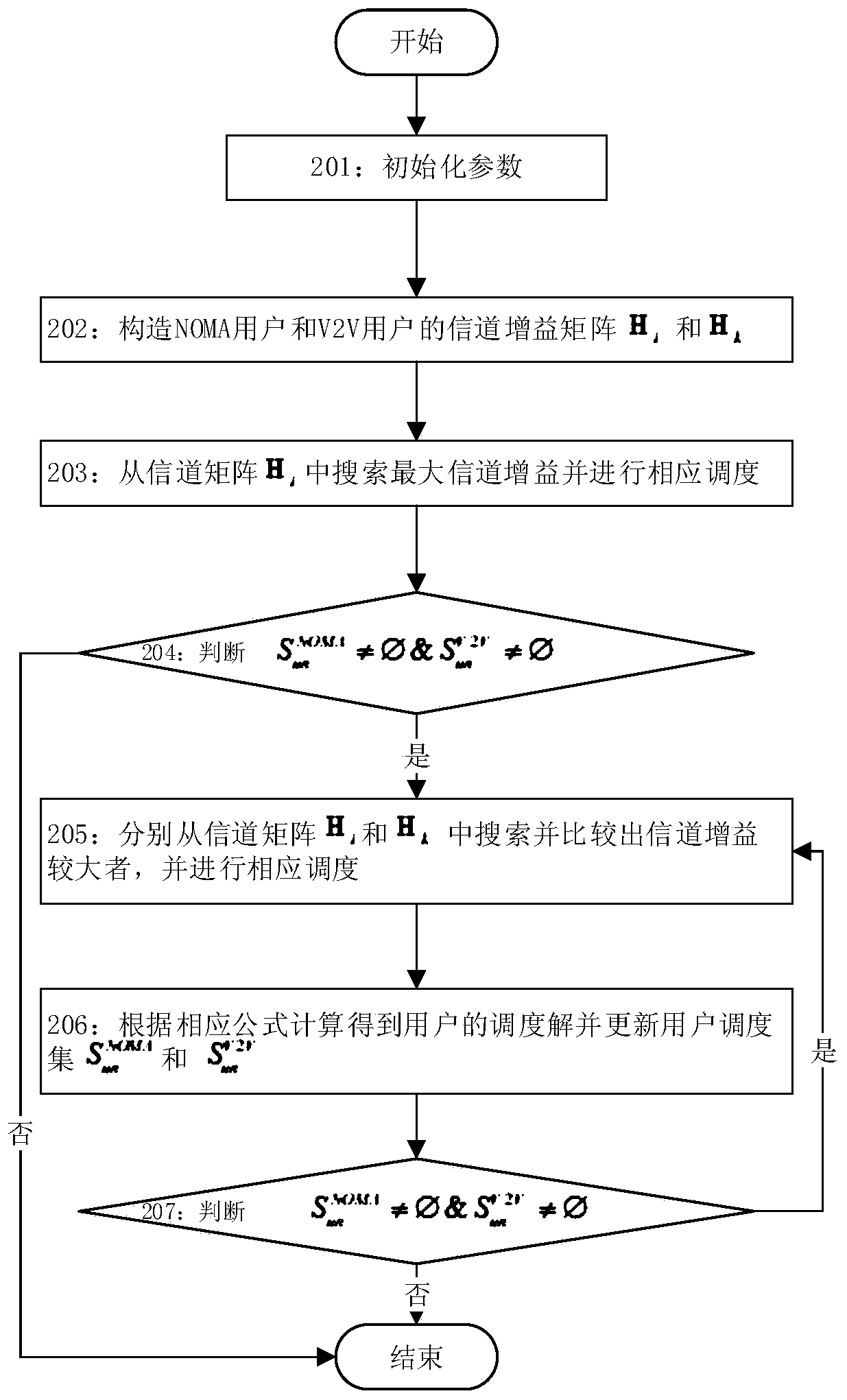NOMA cellular Internet of Vehicles dynamic resource scheduling method based on energy efficiency
A technology of dynamic resources and scheduling methods, applied in network traffic/resource management, services based on specific environments, vehicle components, etc., can solve problems such as ignoring resource allocation, limiting the number of cellular users, network congestion, etc., to avoid network Effects of congestion, maximizing system energy efficiency, and ensuring queue stability
- Summary
- Abstract
- Description
- Claims
- Application Information
AI Technical Summary
Problems solved by technology
Method used
Image
Examples
Embodiment Construction
[0039] The preferred embodiments of the present invention will be described in detail below with reference to the accompanying drawings.
[0040] see figure 1 as shown, figure 1 It is a vehicle communication scene diagram under the cellular network of vehicles in a dense urban area adopted by the present invention. In the example of the present invention, a transmission scenario including two communication modes of V2I downlink and V2V sidelink is considered. In the downlink V2I communication, the number of devices connected to the network is increased by introducing NOMA technology, and the V2V sidelink direct communication reduces the burden on the base station and has a low end-to-end transmission delay. Urban roads are in the shape of a Manhattan grid, and the distribution of vehicles follows a one-dimensional Poisson point distribution model The user's wireless channel model is composed of path loss, slow fading and fast fading formed by shadow fading. NOMA users ado...
PUM
 Login to View More
Login to View More Abstract
Description
Claims
Application Information
 Login to View More
Login to View More - R&D
- Intellectual Property
- Life Sciences
- Materials
- Tech Scout
- Unparalleled Data Quality
- Higher Quality Content
- 60% Fewer Hallucinations
Browse by: Latest US Patents, China's latest patents, Technical Efficacy Thesaurus, Application Domain, Technology Topic, Popular Technical Reports.
© 2025 PatSnap. All rights reserved.Legal|Privacy policy|Modern Slavery Act Transparency Statement|Sitemap|About US| Contact US: help@patsnap.com



